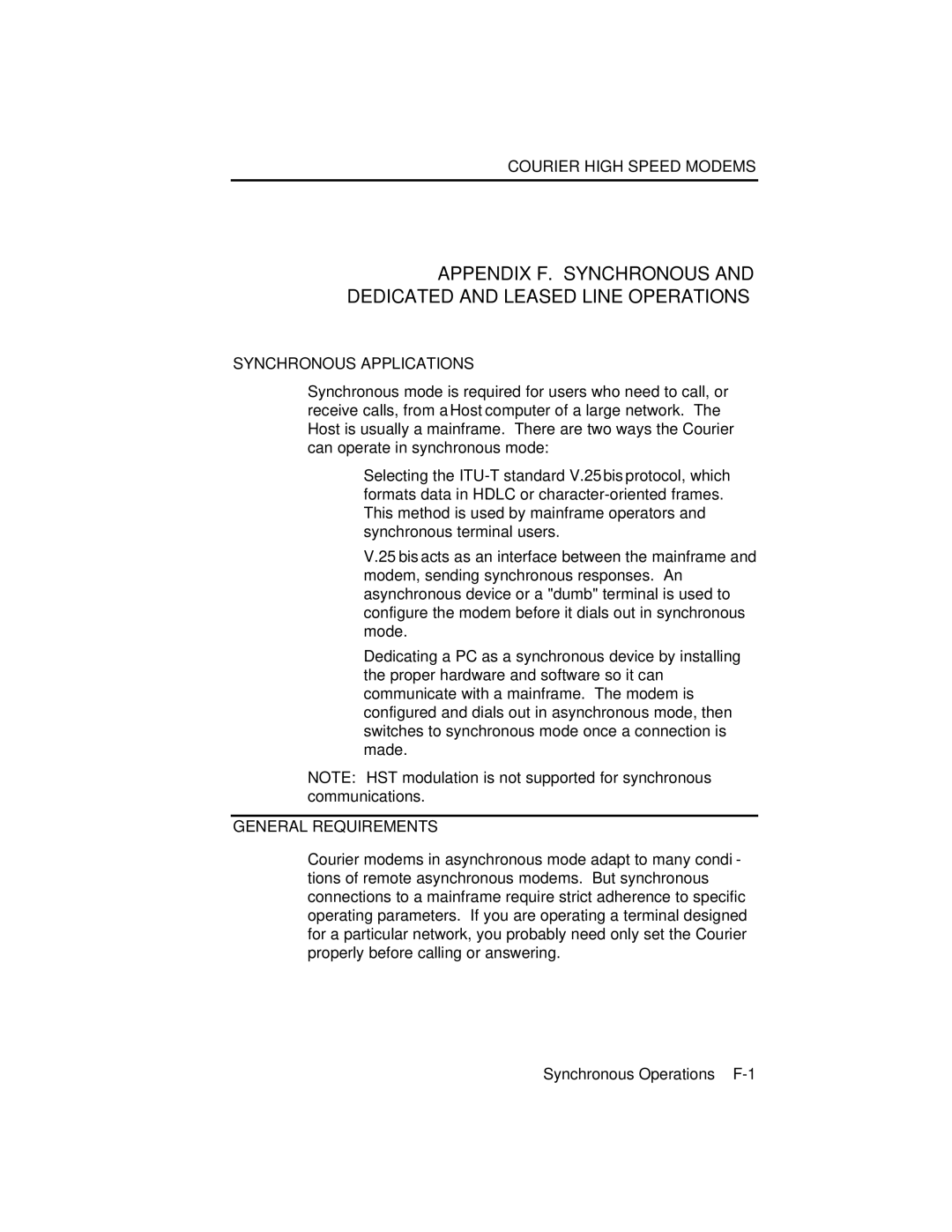
COURIER HIGH SPEED MODEMS
APPENDIX F. SYNCHRONOUS AND DEDICATED AND LEASED LINE OPERATIONS
SYNCHRONOUS APPLICATIONS
Synchronous mode is required for users who need to call, or receive calls, from a Host computer of a large network. The Host is usually a mainframe. There are two ways the Courier can operate in synchronous mode:
•Selecting the
V.25 bis acts as an interface between the mainframe and modem, sending synchronous responses. An asynchronous device or a "dumb" terminal is used to configure the modem before it dials out in synchronous mode.
•Dedicating a PC as a synchronous device by installing the proper hardware and software so it can communicate with a mainframe. The modem is configured and dials out in asynchronous mode, then switches to synchronous mode once a connection is made.
NOTE: HST modulation is not supported for synchronous communications.
GENERAL REQUIREMENTS
Courier modems in asynchronous mode adapt to many condi- tions of remote asynchronous modems. But synchronous connections to a mainframe require strict adherence to specific operating parameters. If you are operating a terminal designed for a particular network, you probably need only set the Courier properly before calling or answering.
Synchronous Operations
